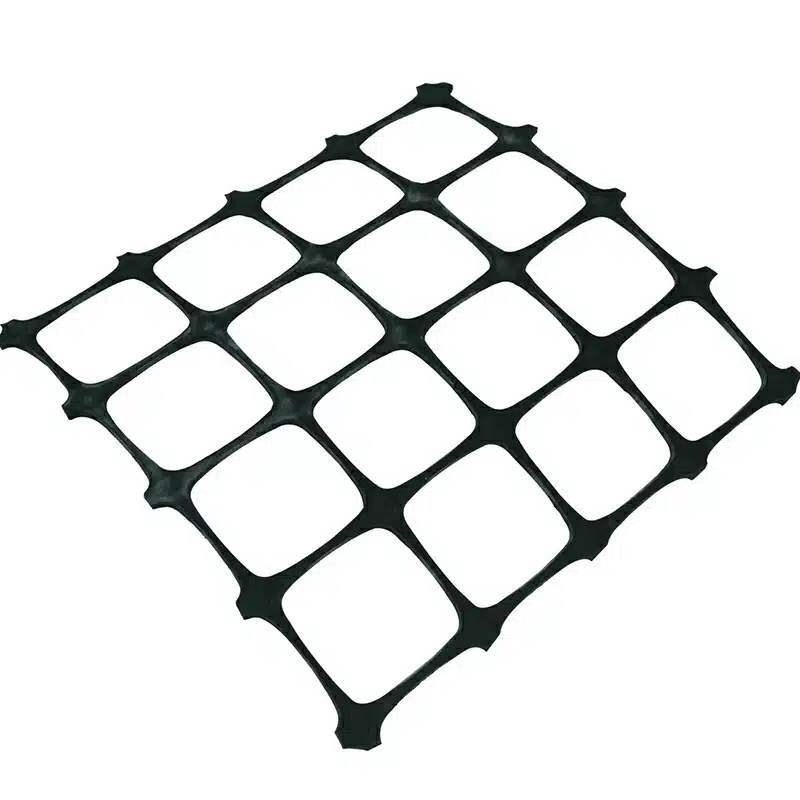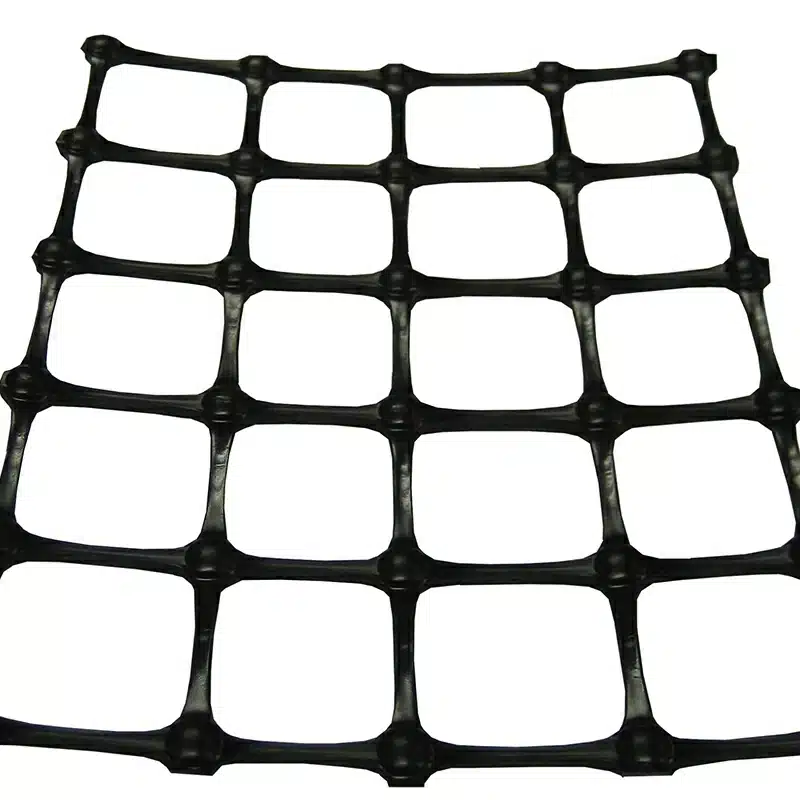+86-159 9860 6917
info@geofantex.com
geofantex@gmail.com
+86-400-8266163-44899
Geogrid engineering is a crucial aspect of civil engineering that plays a pivotal role in strengthening infrastructure. In this article, we will explore the fundamentals of geogrids, their functions, and the reasons why they are indispensable in various construction projects. We’ll also delve into their specific application in road construction.

What is Geogrid in Civil Engineering?
Geogrids are synthetic materials, often in the form of a grid or mesh, specifically designed to reinforce soils and provide stability to various structures in civil engineering. These grids are typically made from materials like high-density polyethylene (HDPE) or polyester, which exhibit high tensile strength and resistance to environmental factors. Geogrids are integrated into the soil to enhance its load-bearing capacity, making them an essential component in modern construction practices.
What Does a Geogrid Do?
Geogrids play a crucial role in civil engineering by enhancing project stability. When placed in the soil, they create a reinforced coherent mass behind retaining walls by stabilizing the soil. This helps distribute loads evenly and prevents soil erosion. Geogrids effectively bond soil particles, improving cohesion and frictional resistance. This enhanced soil stability supports heavy loads like retaining walls, embankments, and pavements while reducing settling and displacement issues.
Why Do You Need Geogrid?
Using geogrids in construction projects offers several key benefits, including:
- Enhanced Load-Bearing Capacity: Geogrids significantly increase soil’s ability to bear heavy loads, ensuring that structures remain stable, supporting slope stabilization, soil stabilization, and soil reinforcement.
- Improved Soil Stability: Geogrids reinforce the soil, reducing the risk of soil erosion, settlement, and lateral movement, thereby preserving the integrity of the construction. This applies to slope stabilization, soil stabilization, and soil reinforcement as well.
- Cost Efficiency: Geogrids often reduce the need for extensive excavation and costly structural materials, resulting in cost savings for projects involving slope stabilization, soil stabilization, and soil reinforcement.
- Sustainability: Geogrids help minimize the necessity for extensive earthworks and reduce resource consumption, aligning construction practices with sustainable principles, especially in projects focused on slope stabilization, soil stabilization, and soil reinforcement.
What is Geogrid in Road Construction?
In road construction, geogrids are a game-changer. They are used to improve road performance and longevity in the following ways:
- Pavement Reinforcement: Geogrids are placed within the base or subbase layers of a road to strengthen the foundation. This design allows them to interlock with and confine the aggregate, creating a mechanically stabilized layer (MSL) that evenly distributes the load. This reinforcement extends the road’s lifespan by reducing issues like rutting, cracking, and deformation.
- Slope Stabilization: In hilly or mountainous terrain, geogrids are employed to stabilize road embankments. They interlock with the soil and aggregate, creating a mechanically stabilized layer that prevents landslides or erosion, ensuring safer road conditions.
- Soil Retention Walls: Geogrids are utilized in the construction of retaining walls along roadsides. By interlocking with the soil and aggregate, they ensure that these walls remain stable and secure, even in challenging terrain. This method of stabilization is crucial for maintaining the integrity of roadside structures.
In conclusion, geogrid engineering is a cornerstone of modern civil engineering. Geogrids are essential for enhancing the stability and longevity of various construction projects, from buildings to roads. By reinforcing soil and providing robust structural support, geogrids play a vital role in shaping the infrastructure of today and tomorrow, while also contributing to more sustainable construction practices.



Get Free Sample
We’ll respond as soon as possible(within 12 hours)






















